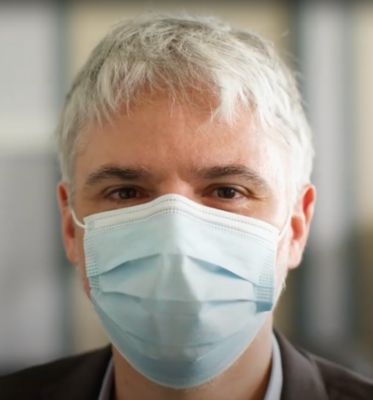See how physicians at Hospices Civils de Lyon use spectral-based CT to improve diagnoses
- Featuring |
- Featuring
- August 28 2024
- Duration 3:5
Clinicians at Hospices Civils de Lyon, in France, count Philips spectral-detector CT as a critical factor in diagnosing their patients. It allows them to examine all patients, regardless of their body mass index (BMI), and improves their ability to identify defective anatomy and tailor treatment options.

At-a-glance:
- The move to spectral-based CT proved to be an important decision as the shift from conventional black and white imaging to spectral imaging helped improve the quality of their diagnoses
- The increased iodine sensitivity spectral-detector CT offers helped them reduce contrast agent dose
- Today’s application allows radiologists to quickly and effectively reach a confident diagnosis An 8-cm detector allows for a significantly improved quality of images, whether standard or spectral
Improved sensitivity and ease-of-use
Hospices Civils de Lyon made the switch to spectral-based CT in 2017. The transition from black and white imaging to color imaging proved to be an extremely important factor in diagnosing their patients. According to Professor Phillipe Douek, “It has enabled us to increase iodine sensitivity and thereby reduce doses of contrast agents. We’re also able to examine all patients, even those who have a high BMI and it means we don’t have to change the usual practices employed by technologists or radiologists. And the data acquisition workflow doesn’t change compared with standard acquisition.”
Spectral detector-based technology is innovative because it moves away from detectors and enables us to use spectral acquisition for all patients.
Clarity in diagnosis
In the case of a patient who was sent to the hospital for a suspected pulmonary embolism, Professor Loic Boussel uses spectral imaging to confirm the problem. In the video, he analyses the acquired images step-by-step with the system’s tools. He can fine-tune to the desired effect. “When the energy levels are high, there’s a lot less contrast in the image as we’re favoring the Compton effect over the photoelectric effect. When we decrease the energy levels, you’ll see that by favoring the photoelectric effect, we’re increasing the iodine inside the vessels, and you’ll notice that we can now see the defect much more clearly in the pulmonary artery.

Once we've done that, we can switch to Z Effective imaging which is particularly effective in detecting of pulmonary embolisms because it enables us to see any perfusion problems.”
Prepared for the future
Physicians at Hospices Civils de Lyon have found that improvement in diagnostic treatment means they don’t have to perform other tests, which allows them to work faster in treating emergency patients. And their partnership with Philips has proved beneficial. As Professor Douek states, “In 2017, when we liaised with the Philips teams, we already anticipated what would happen next. An 8-cm detector seemed very important to us, particularly for cardiac applications, pulmonary applications and vascular applications. This 8-cm detector, with a fast table speed, will allow us to significantly improve the quality of our images, whether standard or spectral.”
